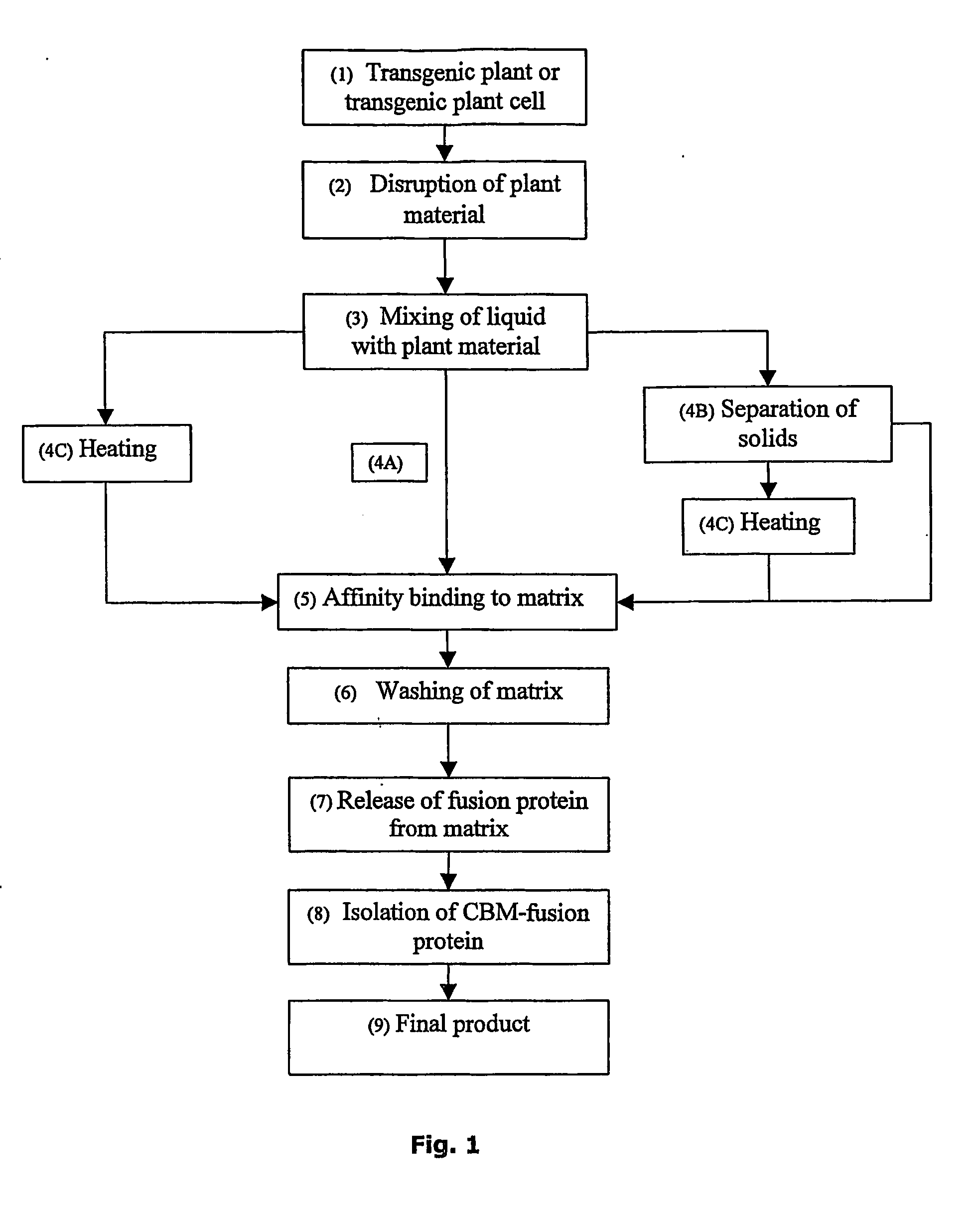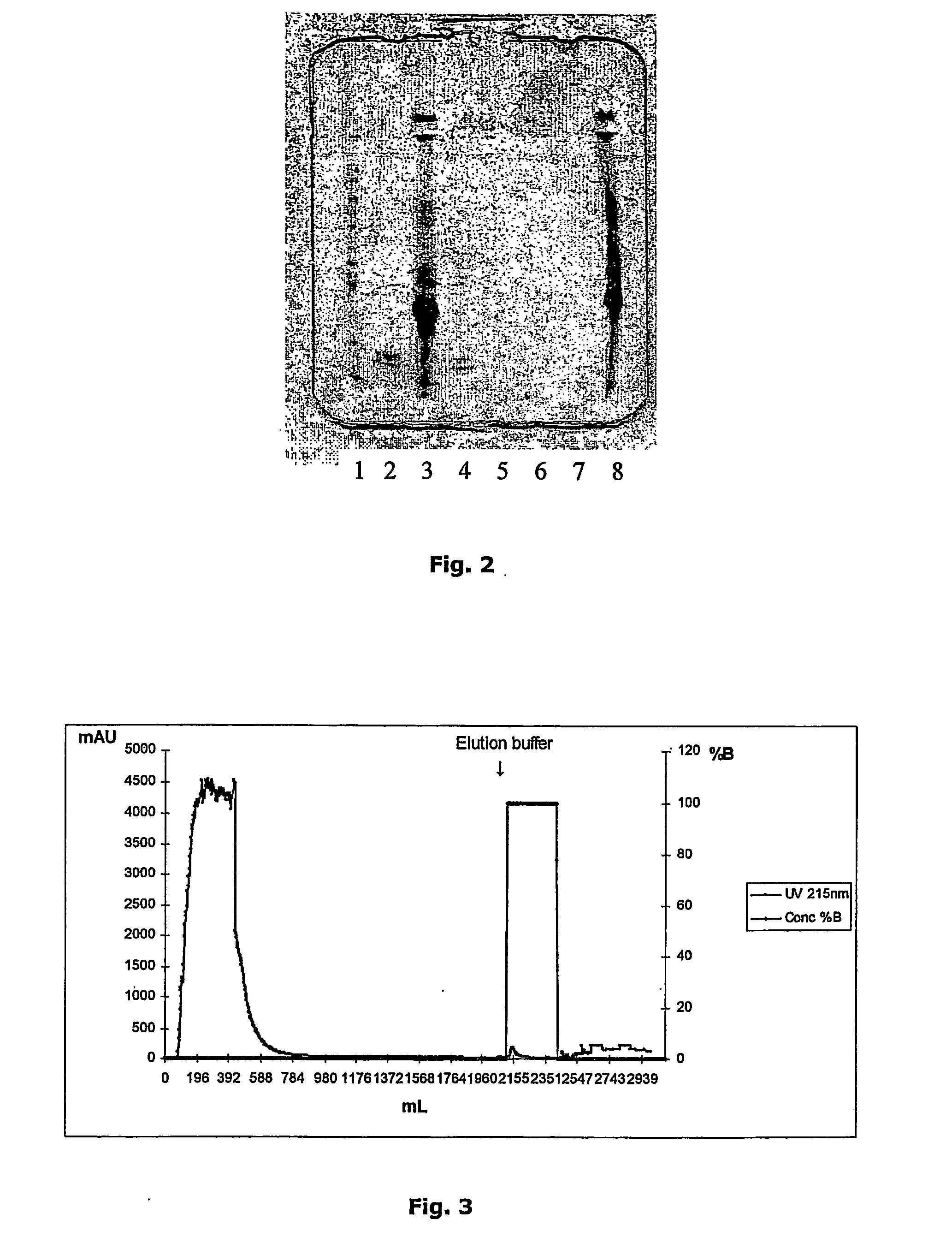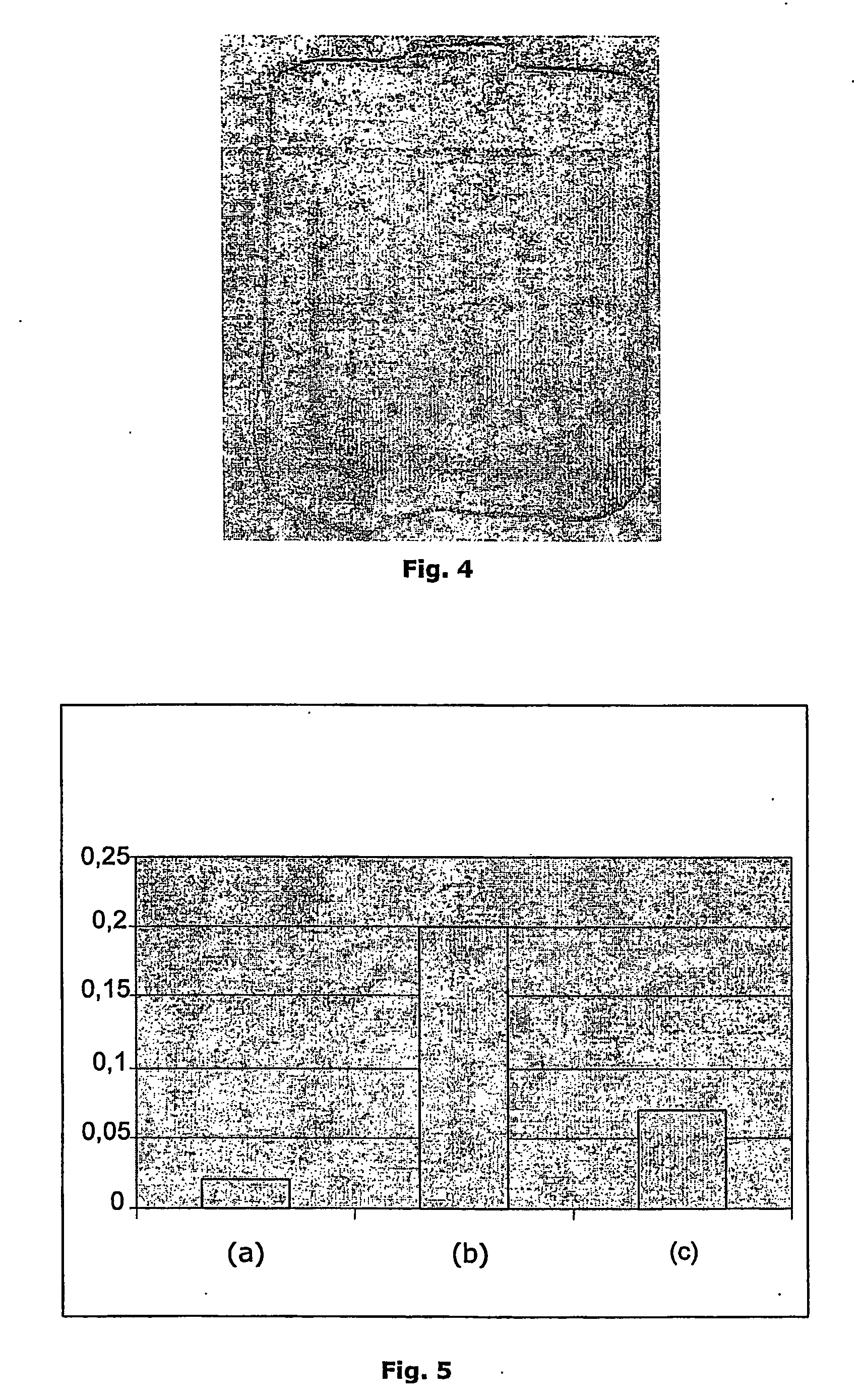Non-denaturing process to purify recombinant proteins from plants
a recombinant protein and plant technology, applied in the field of biochemistry and protein technology, can solve the problems of complex and expensive purification, high processing cost, and difficult purification of heterologous proteins, and achieve the effects of strong binding, high yield of bound cbm fusion proteins, and preservation of activity and structur
- Summary
- Abstract
- Description
- Claims
- Application Information
AI Technical Summary
Benefits of technology
Problems solved by technology
Method used
Image
Examples
example 1
Biomass Interaction Study: CBM9-2 and Milled Barley Seed
[0090] Dried barley seed was finely ground in a Retsch mill to a fine flour. 1 g of milled seed was used for the extraction of water-soluble components from the seed with 5 ml of low salt buffer (50 mM potassium phosphate buffer pH 7.02), as a means to rid the sample of all water-soluble components that might interfere with the biomass interaction study. The mixture was vortexed and tumbled for 5 minutes to ensure thorough mixing of the liquid and the milled barley seed material. Following this mixing, the samples were centrifuged at 5000×g for 4 minutes to pellet the solids. After centrifugation, the supernatant was discarded. This procedure was repeated 3 times with low salt buffer, with the supernatant discarded after each centrifugation. Then the washing procedure was repeated 3 times with high salt buffer (50 mM potassium phosphate buffer pH 7.02, 1 M NaCl), the supernatant discarded as before. The resulting washed solid...
example 2
Purification of CBM9-2 from Milled Barley Seed Extract
[0093] Barley seeds were milled to finely ground flour using commercially available mill (Aarslev Maskinfabrik, Erhvervsvangen 11, 5792 Aarslev, DK). The resulting barley flour was wetted in Low salt buffer (50 mM potassium phosphate buffer pH 7.02) in volume-ratios 2:3, barley flour:buffer, respectively. The liquid was mixed thoroughly with the flour in a vessel and allowed to sediment overnight at 4° C. CBM9-2 purified from bacteria was added to the barley seed-supernatant. The next day the spiked supernatant (100 ml) containing CBM9-2 was fed to to a Streamline 25 (Amersham Biotech) chromatography column containing cellulose (Avicel™). The feed application was done at flowrate 184 cm / h, in expanded bed mode, followed by a washing step with 5 column volumes high salt buffer (1 M NaCl in 50 mM KPO4, pH 7.02), followed by 5 column volumes of low salt buffer (50 mM KPO4, pH 7.02). The expanded column bed was allowed to sediment ...
example 3
Heat Stability and Enrichment of CBM9-2 in Extracts.
[0095] 1.5 grams of milled barley were dissolved in 7.5 ml of Low salt buffer (50 mM KPO4, pH 7.02). The solution was continuously mixed in a tumbler for 1 hr. And spun down at 6000 rpm for 10 minutes. The supernatant (extract) was measured for protein content with Bradford assay and found to contain 1.93 mg / ml of soluble seed proteins. 350 μl of extract were mixed with 350 μl of purified CBM9-2 protein (0.238 mg / ml) and aliquoted to Eppendorf tubes that were subsequently exposed to different temperatures (room temperature, 50° C., 60° C., 70° C. and 90° C.) in a water bath for 10 minutes. After heat treatment the samples were spun down at 11.000 rpm for 10 minutes and samples from the different heat treatments analysed by SDS-PAGE. The-samples from the heat stability test were prepared for SDS-PAGE and run on 12.5% SDS-PAGE gels (PhastGels homogenous 12.5) using PhastSystem (Amersham Pharmacia Biotech). After completion of the r...
PUM
| Property | Measurement | Unit |
|---|---|---|
| temperature | aaaaa | aaaaa |
| temperature | aaaaa | aaaaa |
| temperatures | aaaaa | aaaaa |
Abstract
Description
Claims
Application Information
 Login to View More
Login to View More - R&D
- Intellectual Property
- Life Sciences
- Materials
- Tech Scout
- Unparalleled Data Quality
- Higher Quality Content
- 60% Fewer Hallucinations
Browse by: Latest US Patents, China's latest patents, Technical Efficacy Thesaurus, Application Domain, Technology Topic, Popular Technical Reports.
© 2025 PatSnap. All rights reserved.Legal|Privacy policy|Modern Slavery Act Transparency Statement|Sitemap|About US| Contact US: help@patsnap.com



